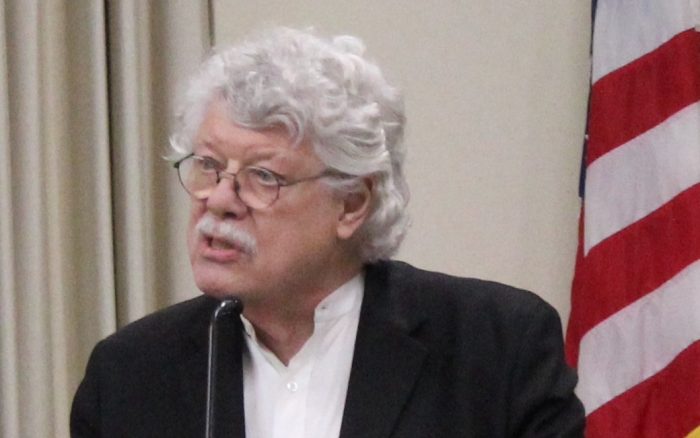Architect Michael Schwarting to retire from teaching, still designing

By Aidan Johnson
Port Jefferson is known for its rich history. Many of its buildings have designated placards that show how they fit into the village’s unique story. However, the newer buildings have just as much of a story to tell, thanks to Michael Schwarting.
For decades, he has worked as an architect, helping to shape the identity of the local area.
Schwarting knew he wanted to be an architect from the time he was in high school. He has served as a professor at Columbia University and the New York Institute of Technology. Now, he is retiring after 50 years of teaching architecture and urban design and from the latter he will be a professor emeritus.
While teaching at Columbia, Schwarting met his wife, Frances Campani.
“I had met her when I was teaching at Columbia, but she wasn’t my student, and I had actually hired her to teach at New York Institute of Technology when I was a chairperson there,” Schwarting said in a phone interview.
Schwarting and Campani were married in 2000 and opened Campani and Schwarting Architects.‘It’s really been quite wonderful to be in a town where you could really be connected to everything that’s going on and be involved in important public things.’
— Michael Schwarting
“Frances had been living for some years in Port Jefferson and practicing on her own, and we combined to make Campani and Schwarting,” he said.
Schwarting has enjoyed working with his wife at their firm and says that it isn’t rare for firms to have husband-and-wife teams.
Together, Schwarting and Campani have striven to keep the character of Port Jefferson and its surrounding towns alive.
“I think that’s one of the really gratifying things,” he explained. “It’s really been quite wonderful to be in a town where you could really be connected to everything that’s going on and be involved in important public things,” he added.
One such project that Schwarting and his firm designed was Heritage Park in Mount Sinai, colloquially known as the Wedge, in the early 2000s.
“That was a wonderful project, because the Mount Sinai community organization was really wonderful to work with,” he said.
“It started out with a project that they came to us about when we were teaching to have our students do some design ideas, which were presented to the community, and that evolved into being more realistic than the students usually are,” Schwarting elaborated.
One of his favorite memories and most important projects was the work done for Port Jefferson’s harbor front. While he was the director of an urban design program at NYIT, he had his students present their plans for the harbor at one of the village meetings.
Even though the plans were all extravagant, the mayor was still excited by the presentation, and asked them to continue working on it.
“And that sort of turned into a grant the village got to study the harbor front, and we made this harbor front plan that was part of the village comprehensive plan,” Schwarting said.
“We finished it in 2014 and it … was combined with a lot of our work on village projects, but that one is the one that we’re still kind of referencing in trying to deal with the stormwater mitigation and also rising tides, which are right there in the village harbor.”
While the mitigation efforts are difficult due to Port Jefferson’s natural flooding, which has been exacerbated by the parking lots and asphalt being put over ground that once absorbed the water, Schwarting says that they are “slowly uncovering all kinds of possibilities to do natural storm surge mitigation.”
Schwarting has been recognized for his work, and has received multiple American Institute of Architecture awards for places such as the mixed-use building on Main Street at Mill Creek Road.
While he may be retiring from teaching, Schwarting will still be going full steam with the grant for flood mitigation and will continue to help the hamlets and villages within Brookhaven keep their unique aesthetics.






